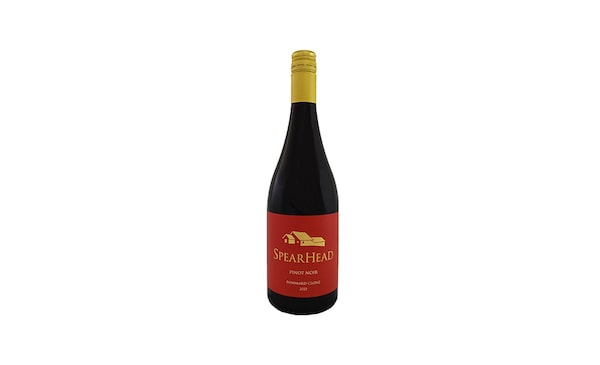
In rare instances, a winery might release a pinot noir from single clone as was the case with Spearhead’s recent release of the Pommard Clone Pinot Noir 2022 to members of its wine club.Supplied
Historically, vineyards were established using whatever vines were available. But planting a vineyard today depends on weather and climate data to determine which varieties will thrive and ripen in that location, and modern winemakers pay inordinate attention to grape growing to get the most out of not only each grape variety, but different parcels, rows and, in extreme cases, individual vines in their vineyards. They often dig deeper to factor in soil type, its water-holding capacity and other site-specific considerations.
Once they know what they want, winemakers can place orders with nurseries that sell various varieties, such as pinot noir, cabernet sauvignon, merlot and others that have descended from the germination of a single seed. (Originally these varieties were selected for desirable traits and propagated through cuttings.) Within each variety, there might be a range of different clones that developed over time through genetic variation, spontaneous mutations in their DNA often caused by environmental stresses, that produce grapes with different properties than others. Identifying new clones is a long and costly process, following years of observation and propagation, to enable growers access to vines with reliable and predictable traits.
Ideally, winemakers will be able to order their desired clone(s) and rootstock combinations to set their vineyards up for success. However, increased global demand for specific grapes varieties, clones and rootstocks, which provide resistance to soil pests (like phylloxera and nematodes) and can reduce or boast the vigor of a vine depending on need, has some Canadian producers waiting to plant.
There are often many different clones of popular wine grapes, typically the older the grape variety, the more clones there are. As one of the oldest cultivated wine grapes, pinot noir has the largest number of clones that show distinct characteristics from one another. (It also has spawned mutations that affected the colour of the grape cluster, creating pinot blanc, pinot gris and pinot meunier, now called meunier by Champagne producers, but are otherwise genetically indistinguishable by their DNA.)
Each different pinot noir clone can produce a wine with different aroma and flavour characteristics as well as colour, stability and structure, which gives winemakers the opportunity to blended them together in different ways to create a complex and harmonious red wine to reflect the quality of a specific vineyard or larger region. In rare instances, a winery might release a pinot noir from single clone as was the case with Spearhead’s recent release of the Pommard Clone Pinot Noir 2022 to members of its wine club.
Based in Kelowna, Spearhead focuses on producing pinot noir from grapes grown on its estate vineyards in Kelowna and other desirable sites in the central Okanagan Valley. Winemaker Grant Stanley and the team have access to different clones of the pinot noir grape, many that originated in France along with some that come from California. One of the winery’s growers has the Pommard clone in their vineyard in Summerland. It’s a popular choice for winemakers in California and Oregon, where it is said to contribute intense ripe fruit and spice flavours to a wine or a blend.
Spearhead and other pinot noir specialists in Canada and beyond are primed to talk about the clonal diversity in their vineyards as part of discussing their philosophy and approach to winemaking. Staff at the tasting bar will reference the earthiness of clone 115, the fruit and fragrance of clone 667 or the dark fruit notes of clone 828. Special tastings are often conducted to show the attributes of each individual clone compared with how they work together in the finished wine. They follow a winemaking and marketing approach that comes from the Burgundy region of France where pinot noir and chardonnay gain added value from the place where the grapes are grown.
Wineries that focus on cabernet, merlot and sauvignon blanc aren’t wired the same way. Even though different clones may be present in their vineyards, you don’t often hear them addressing the specific types of vines they cultivate. It’s not seen as a valuable marketing tool.